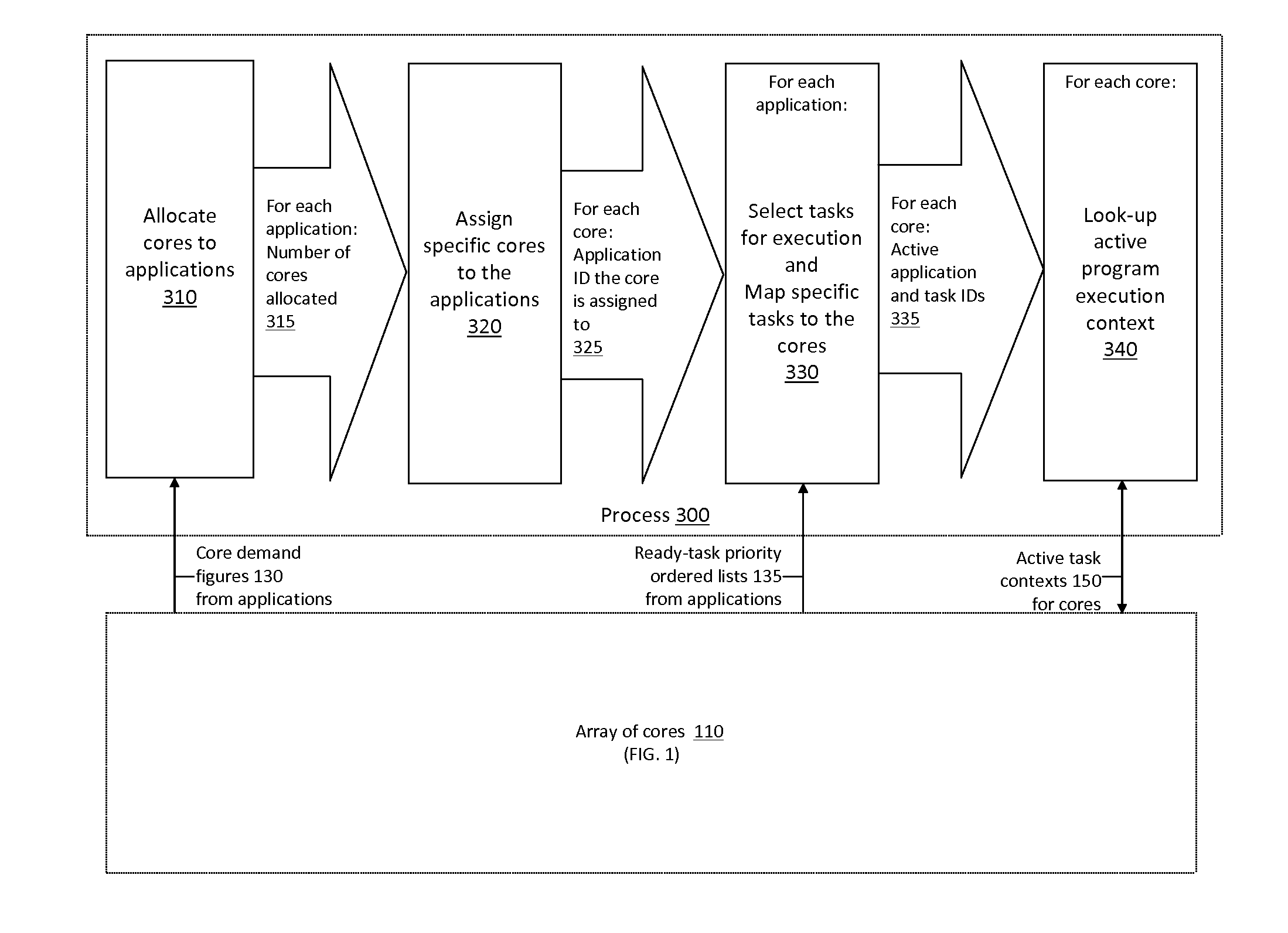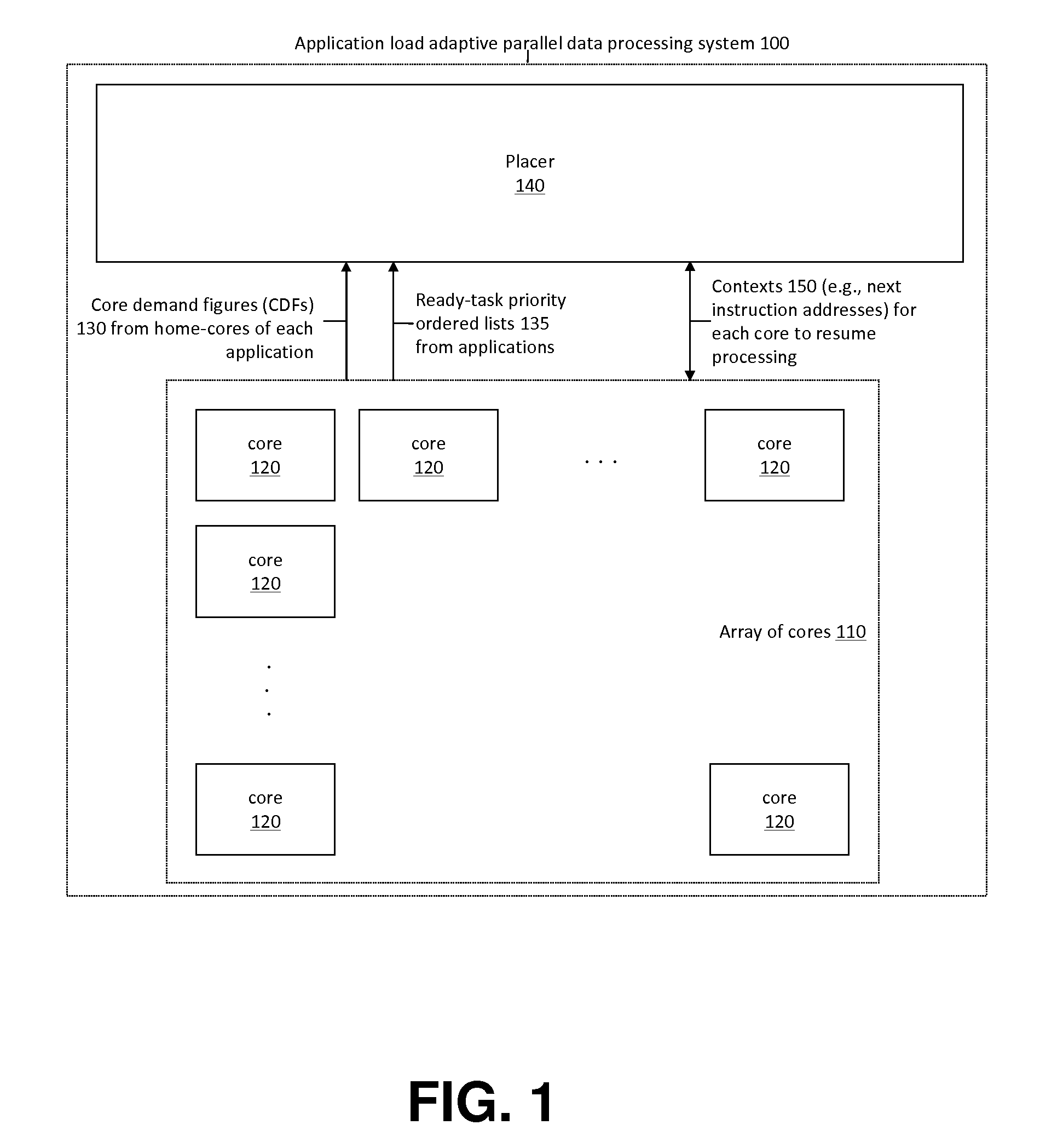Application Load Adaptive Processing Resource Allocation
a resource allocation and resource technology, applied in the field of digital data processing systems, can solve the problems of pursuing any one of these traditional objectives rather at the expense, severely suboptimal computing resource utilization, non-deterministic and compromised performance of individual applications, etc., to maximize the whole system data processing throughput, maximize the number of processing cores, and efficiently share a multi-core
- Summary
- Abstract
- Description
- Claims
- Application Information
AI Technical Summary
Benefits of technology
Problems solved by technology
Method used
Image
Examples
Embodiment Construction
[0033]The invention is described herein in further detail by illustrating the novel concepts with reference to the drawings.
[0034]FIG. 1 provides a functional block diagram for an embodiment of the invented multi-core data processing system, with application program processing load adaptive allocation of the cores among the software applications configured for the system. For general context, the system of FIG. 1 comprises an array 110 of processing cores 120 for processing instructions and data of a set of software application programs configured run on to shared the system. In such manner processing the application programs to produce processing results and outputs, the cores of the system access their input and output data arrays, which in embodiments of the invention comprise memories accessible to one or more of the cores, as well as input and output communication ports accessible to one or more of the cores. Since the present invention is directed primarily to the techniques t...
PUM
 Login to View More
Login to View More Abstract
Description
Claims
Application Information
 Login to View More
Login to View More - R&D
- Intellectual Property
- Life Sciences
- Materials
- Tech Scout
- Unparalleled Data Quality
- Higher Quality Content
- 60% Fewer Hallucinations
Browse by: Latest US Patents, China's latest patents, Technical Efficacy Thesaurus, Application Domain, Technology Topic, Popular Technical Reports.
© 2025 PatSnap. All rights reserved.Legal|Privacy policy|Modern Slavery Act Transparency Statement|Sitemap|About US| Contact US: help@patsnap.com



